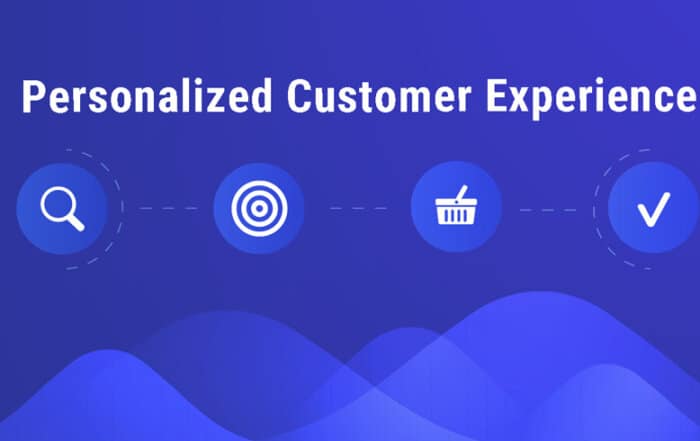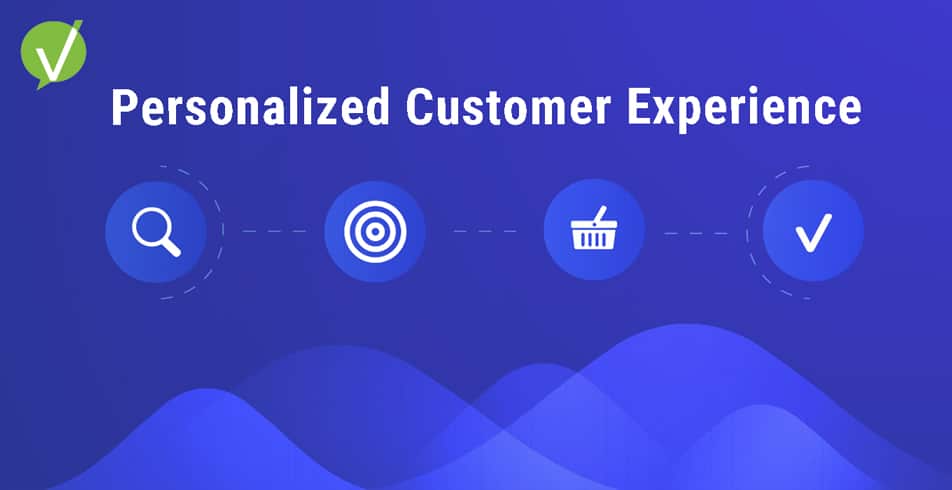Customer Health Metrics: Nurturing Customer Relationships
Introduction
In today’s highly competitive business landscape, understanding your customers is not just beneficial—it’s critical for success. But how can businesses truly gauge the health of their customer relationships? The answer lies in leveraging data through customer health metrics.
Welcome to our in-depth exploration of customer health metrics—the indicators that help businesses measure, interpret, and improve their relationships with customers. Throughout this blog, we’ll discuss the concept of customer health metrics, delve into key indicators, and provide insight into how you can use this data to nurture and grow your customer base.
Introduction of the Concept of Customer Health Metrics
Customer health metrics are data points that provide insight into the state and potential trajectory of your relationship with a customer. They measure factors like satisfaction, loyalty, usage behavior, and financial contribution to give you a comprehensive view of your customer relationships. This goes beyond traditional metrics to include a holistic perspective that helps predict future customer behavior and longevity.
Explanation of Why Customer Health Metrics Are Important for Business Success
These metrics are not just another set of data; they’re crucial for long-term business success. Understanding customer health enables businesses to take data-driven actions to retain customers, maximize their lifetime value, and ultimately drive sustainable business growth. Businesses that prioritize customer health often see improved customer satisfaction and loyalty, decreased churn, and increased revenue.
Read more as we dive deeper into the importance of understanding and utilizing customer health metrics to nurture and grow your customer relationships. By the end of this blog, you’ll have a clear understanding of the key indicators of customer health and how to leverage them effectively for your business growth.
Understanding Customer Health Metrics
Understanding your customers is the first step to building lasting relationships, and that’s where customer health metrics come into play. Let’s delve deeper into the details.
Definition of Customer Health Metrics
Customer health metrics can be defined as a set of measurable values that provide insights into the satisfaction and loyalty of your customers. These metrics capture the overall “health” of your customer relationships, signifying how satisfied and engaged your customers are with your product or service, and how likely they are to continue their patronage.
Unlike many other customer metrics, customer health metrics don’t just look at a single dimension, such as product usage or purchase frequency. They incorporate a broad range of factors from customer feedback and behavior, making them a more holistic measure of customer experience and relationship strength.
Significance of Customer Health Metrics
Customer health metrics serve as a potent predictive tool. They provide early warning signs about potential issues before they become larger problems, thus enabling you to be proactive in managing and improving customer relationships. Are your customers becoming less engaged? Is their usage of your product decreasing? By tracking customer health metrics, you can identify such patterns and take necessary actions before you lose the customer.
Moreover, these metrics play a crucial role in business growth and sustainability. Healthy customer relationships often translate into improved customer retention, increased upselling and cross-selling opportunities, and more referrals – all of which contribute to revenue growth and business success.
Overview of a Customer Health Score
Central to customer health metrics is the Customer Health Score (CHS). This score is a single, quantifiable value that summarizes the health of a customer relationship. It is calculated based on a variety of factors that may include usage frequency, engagement levels, customer feedback, service ticket counts, and renewal rates, among others.
A comprehensive CHS is an asset for any business. It provides a simple, clear indicator of the customer’s relationship with the business, and can help you quickly identify high-value customers, at-risk accounts, or customers who may be ripe for upselling or cross-selling.
Furthermore, tracking your CHS over time can help you understand the overall health of your customer relationships. You can identify trends, understand the impact of changes or improvements you’ve made, and ultimately make more informed, data-driven decisions to nurture and improve your customer relationships for long-term business success.
Key Indicators of Customer Health
As we delve further into the realm of customer health metrics, it’s crucial to understand the key indicators that businesses use to measure and analyze their customer health. These indicators provide valuable insights into various aspects of customer interactions with your business.
Introduction to the Different Types of Indicators
Customer health indicators come in different forms, each providing a unique perspective on the health of the customer relationship. Some indicators focus on customer sentiment and satisfaction, while others look at financial contributions or usage behaviors. Together, these indicators paint a holistic picture of customer health.
Detailed Description of Key Indicators of Customer Health
- Customer Satisfaction (CSAT): CSAT measures how satisfied customers are with your product, service, or overall experience. It is typically gauged through surveys that ask customers to rate their satisfaction on a scale.
- Net Promoter Score (NPS): NPS identifies how likely a customer is to recommend your business to others. Customers are classified into promoters (likely to recommend), passives (neutral), and detractors (unlikely to recommend), which helps you understand your brand advocacy.
- Customer Effort Score (CES): CES evaluates how easy it is for your customers to interact with your business, with the premise that customers prefer companies that are easy to work with.
- Churn Rate: This is the percentage of customers who stop doing business with you during a defined period. A high churn rate could indicate dissatisfaction, while a low churn rate usually suggests that your customers are pleased with your offer.
- Customer Lifetime Value (CLV): CLV predicts the total revenue a business can expect from a single customer account. It considers factors such as the average purchase value, purchase frequency, and expected customer lifespan.
- Product Usage Metrics: These metrics indicate how customers are using your product or service. They might include frequency of use, features used, and session length, among others. Low usage might suggest that a customer isn’t finding value in your offering.
How to Effectively Measure These Indicators
Measuring these indicators effectively requires a structured approach. Surveys are commonly used for gauging CSAT, NPS, and CES, and should be designed thoughtfully to elicit honest, useful responses. Churn rate and CLV can be calculated using transaction and engagement data. Product usage metrics can be collected through in-product analytics tools.
Importantly, these metrics should be tracked over time to identify trends and patterns. It’s also beneficial to segment your customers based on characteristics like product line, geography, or customer size, as this can reveal more nuanced insights.
How These Indicators Can be Used to Predict Customer Behavior
These customer health indicators not only reveal the current state of your customer relationships but also help predict future customer behavior. For example, a low NPS score might signal a future increase in churn rate, while high product usage might indicate a potential upsell opportunity. By understanding these indicators and acting on the insights they provide, businesses can anticipate customer needs, improve customer experience, and ultimately drive long-term customer loyalty and business growth.
Leveraging Customer Health Data for Business Growth
Having a wealth of customer health data at your fingertips is one thing, but knowing how to interpret and leverage it for business growth is where the real power lies.
Explanation of How to Interpret Customer Health Data
Interpreting customer health data involves analyzing the metrics and looking for patterns, trends, and anomalies that might indicate a shift in customer behavior or satisfaction. It’s about understanding not just what the data says, but what it implies about your customers’ experiences and their future interactions with your business.
For example, a sharp increase in churn rate or a decrease in product usage might suggest that customers are experiencing problems or are dissatisfied with your offering. On the other hand, a high NPS or CLV might indicate a satisfied customer base and opportunities for upselling or cross-selling.
Importance of Data-Driven Decision Making
Using customer health data to drive decision-making can significantly improve business outcomes.
- Reducing Customer Churn: Data-driven insights can help you identify at-risk customers and implement interventions to reduce churn. For example, if analysis reveals that customers often churn after experiencing specific issues, you can proactively address those issues to improve retention.
- Increasing Customer Loyalty and Engagement: By understanding what makes your customers satisfied and loyal, you can replicate those successes. This could involve amplifying features or services that customers love or personalizing their experiences to make them feel valued and understood.
Strategies for Leveraging Customer Health Data
- Personalizing Customer Experience: Use customer health data to understand your customers’ preferences, needs, and behaviors. This can inform personalized communications and experiences that make customers feel valued and understood, increasing their satisfaction and loyalty.
- Proactive Customer Service: Don’t wait for customers to reach out with problems. Use your customer health data to identify potential issues and address them proactively. This can improve customer satisfaction and potentially prevent churn.
- Tailored Marketing Campaigns: Use customer health data to inform your marketing campaigns. For example, target engaged customers with upsell or cross-sell opportunities or re-engage less active customers with special offers or reminders about your product’s value.
- Product Enhancements Based on Customer Feedback: Use your CSAT and product usage metrics to understand what customers love (and don’t love) about your product. This can guide product development efforts, ensuring you’re delivering a product that meets your customers’ needs and expectations.
By leveraging customer health data in these ways, businesses can enhance customer experiences, reduce churn, and drive growth, proving that nurturing customer relationships through data-driven decisions is key to long-term business success.
Connection between Customer Health and Long-Term Business Success
Understanding and utilizing customer health metrics isn’t just a nice-to-have—it’s essential for the long-term success of any business. Let’s explore why.
The Role of Customer Health Metrics in Business Growth Strategies
Customer health metrics are integral to business growth strategies. They provide valuable insights into customer behavior, satisfaction, and loyalty, all of which are key drivers of business growth.
With these metrics, businesses can identify opportunities to deepen customer relationships, expand existing accounts, and reduce churn—all of which contribute to increased revenue. Moreover, by providing a comprehensive view of the customer experience, these metrics can help businesses improve their offerings, deliver more personalized experiences, and ultimately, differentiate themselves in the market.
Conclusion
As we conclude our exploration of customer health metrics, it’s clear that these data points offer invaluable insights into the health and prospects of customer relationships. They provide a comprehensive, predictive view of customer satisfaction and loyalty, guiding businesses to make data-driven decisions that can enhance customer experience and stimulate growth.
Investing time and resources into understanding and leveraging these metrics is not an optional exercise but a strategic necessity for businesses seeking long-term success. By proactively gauging customer health, businesses can preempt customer dissatisfaction, enhance loyalty, reduce churn, and most importantly, cultivate strong, profitable customer relationships that drive growth.
The connection between customer health and business success is unequivocal. By using key indicators such as CSAT, NPS, CES, churn rate, CLV, and product usage metrics, businesses can gain a deep understanding of their customers and tailor their strategies to meet customer needs and exceed their expectations.
At Vivantio, we understand the importance of nurturing customer relationships and the crucial role customer health metrics play in this process. Our robust and flexible service management platform is designed to help you effectively measure and improve these metrics, providing you with the tools to monitor key indicators like CSAT, NPS, CES, and more. Vivantio’s comprehensive ticketing system enables proactive customer service, while our detailed reporting capabilities allow for deep analysis of customer behavior and product usage. Ultimately, we aim to empower your business with the right data and tools to enhance customer experiences, improve loyalty, reduce churn, and drive sustainable growth. With Vivantio, nurturing your customer relationships is not just easier—it’s a strategic advantage.
Don’t wait. Begin assessing the health of your customer relationships now. Invest in the tools and resources necessary to measure these vital metrics and interpret them effectively. The insights you’ll gain will empower your business to retain and grow a loyal, satisfied customer base that fuels your long-term success.
In the end, nurturing customer relationships isn’t just good business—it’s the cornerstone of sustainable growth. So, take a step towards understanding and improving your customer health today, and lay the foundation for your business’s success tomorrow.













